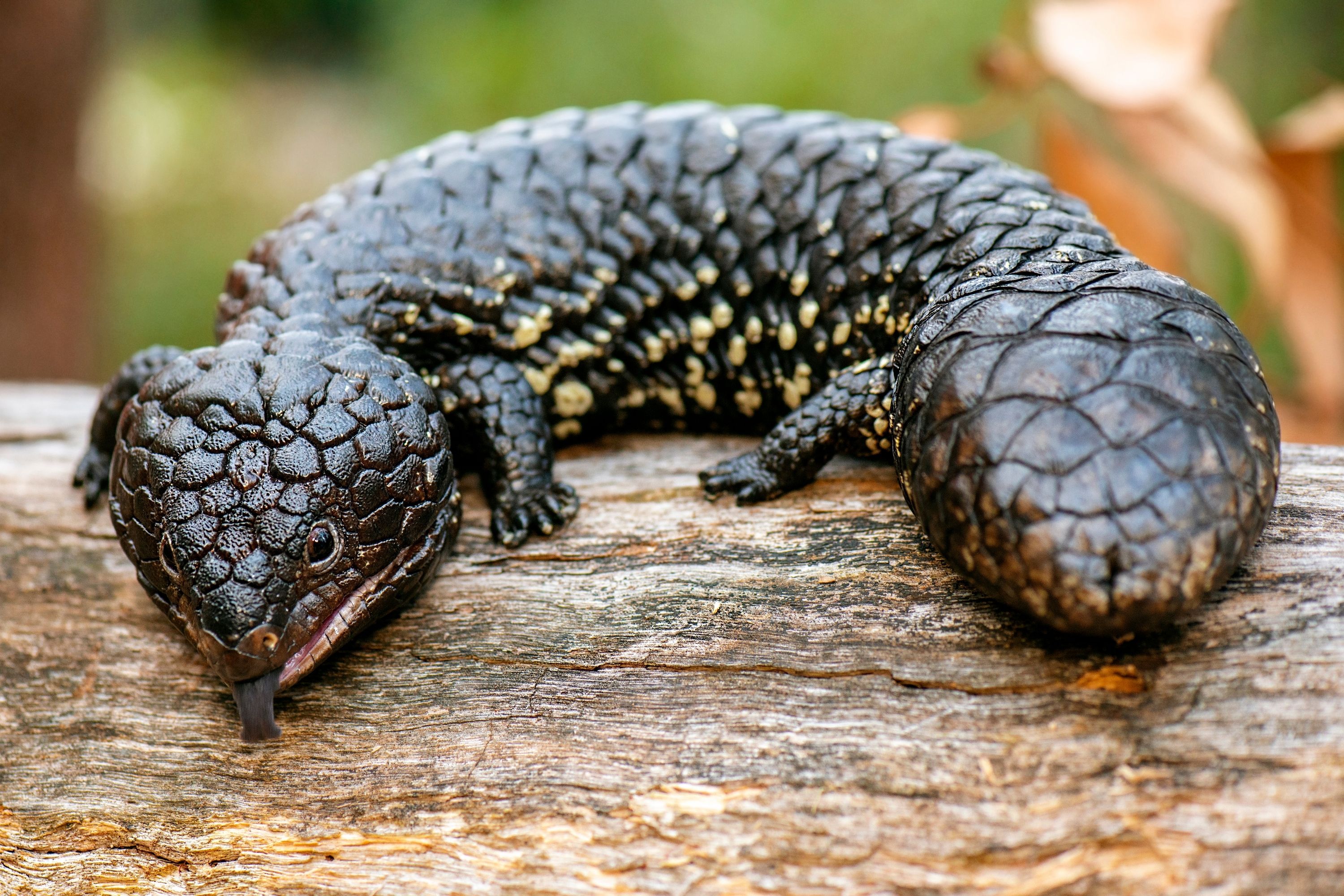Shingleback lizard
(Tiliqua rugosa)

Description
Tiliqua rugosa, most commonly known as the shingleback lizard or bobtail lizard, is a short-tailed, slow-moving species of blue-tongued skink (genus Tiliqua) endemic to Australia. It is commonly known as the shingleback or sleepy lizard. Three of its four recognized subspecies are found in Western Australia, where the bobtail name is most frequently used. The fourth subspecies, T. rugosa asper, is the only one native to eastern Australia, where it goes by the common name of the eastern shingleback. Apart from bobtail and shingleback, a variety of other common names are used in different states, including two-headed skink, stumpy-tailed skink, bogeye or boggi, pinecone lizard. The Noongar Aboriginal people refer to rugosa as yoorn in their language. T. rugosa has a short, wide, stumpy tail that resembles its head and may serve the purpose of confusing predators. The tail also contains fat reserves, which are drawn upon during brumation in winter, during which many lizards perform a behaviour similar to hibernation except they require water every day, but can go without food. This skink is an omnivore; it eats snails and plants and spends much of its time browsing through vegetation for food. In human habitation, it is often seen basking on roadsides or other paved areas. Tiliqua rugosa has a heavily armoured body and can be found in various colours, ranging from dark brown to cream. Its snout–vent length varies from 260 to 310 mm (10 to 12 in), and it is very heavy-bodied for its length. Their eyes are small with a reddish-brown and grey colour. It has a triangular head and a bright blue tongue, fitting in a bright pink mouth. Its short, stumpy tail is similar in shape to its head. This is a defence mechanism, to confuse predators, and has led to the common name of "two-headed skink". Unlike many skinks, shinglebacks do not exhibit autotomy and cannot shed their tails. The average lifespan for these skinks are 10-15 years, but some individuals are known to live for 50 years in the wild. The species normally shed their skin as a whole, including the eye covering. This takes up to several hours, during which the lizard rubs against objects to help the process. The species exhibits sexual dimorphism, where males are stockier and have a larger head. However, females can grow ultimately bigger than the males.
Taxonomic tree:







